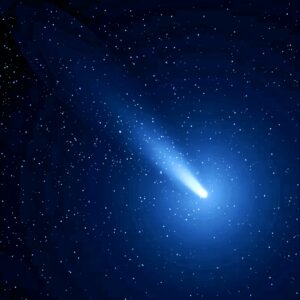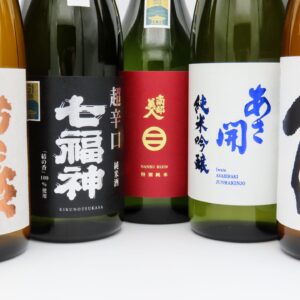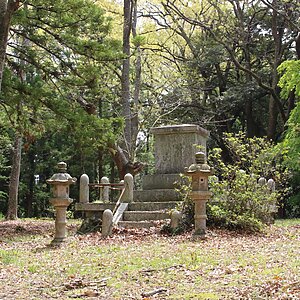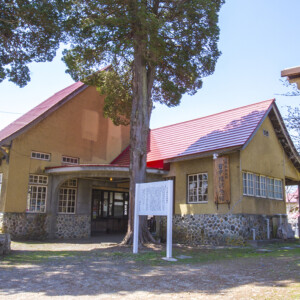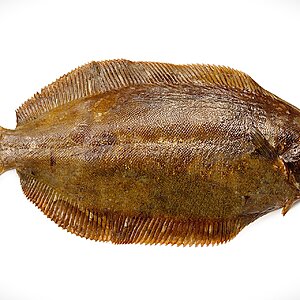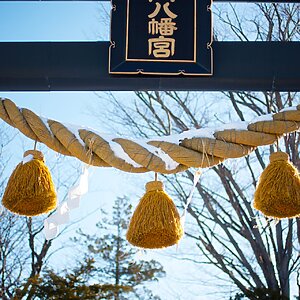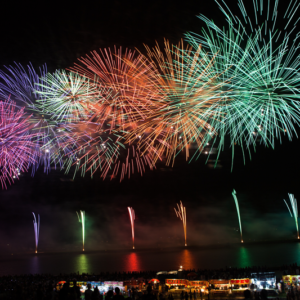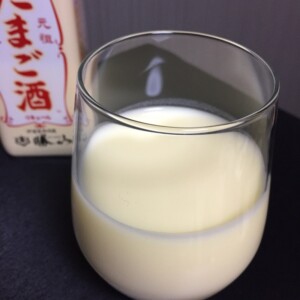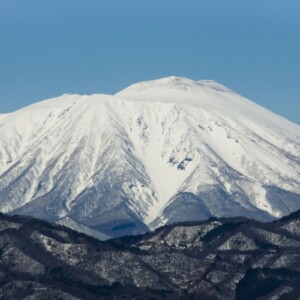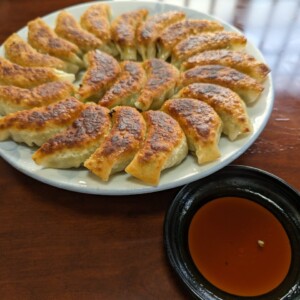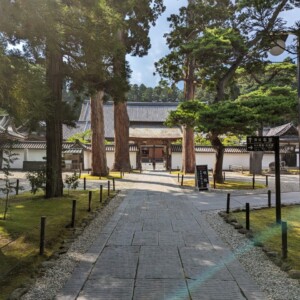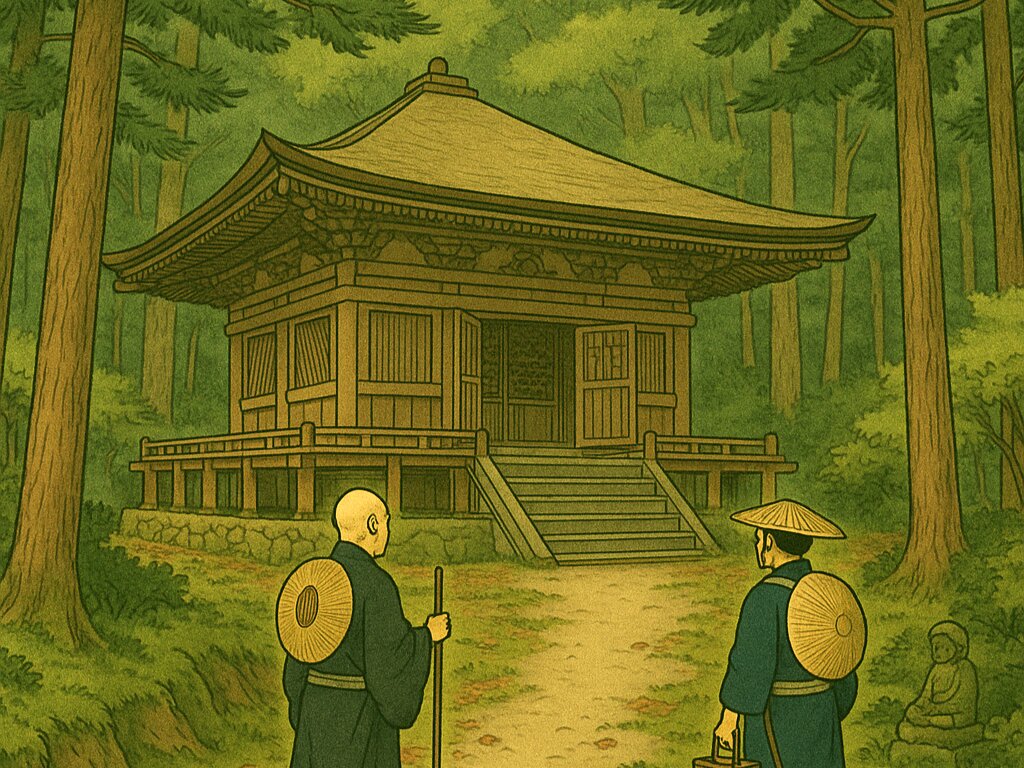
[Series: Tracing the narrow path of the depths ④] Arriving at Hiraizumi, the Pure Land of the three generations of Fujiwara Basho, a dream of Basho
table of contents
- 1 What is Oku no Hosomichi?
- 2 [Ishinomaki/Tome] Was getting lost a creation of Basho?
- 3 [Hiraizumi] The prosperity and fall of three generations of the Oshu Fujiwara clan, and the sorrow of Minamoto no Yoshitsune, brought to tears
- 4 [Chusonji Golden Hall] The light hall remains unchanged from the past
- 5 [A detour into the depths ④] What kind of person was Kawai Sora?
- 6 summary
- 7 [Series: Following the Oku no Hosomichi] Series article
According to Sora's travel diary, Matsuo Basho and Kawai Sora left Matsushima on May 10, 1689 (June 26th in the Gregorian calendar), and stayed overnight in Ishinomaki
However, for some reason, the text states that he left Matsushima on the 12th Odaebashi Bridge and Aneha no Matsu , but got lost and ended up in Ishinomaki.
It is not clear what this means, but Basho and Sora left Ishinomaki on the 11th, stayed in Tome, Tome City, Miyagi Prefecture, and arrived in Ichinoseki City, Iwate Prefecture on the 12th
What is Oku no Hosomichi?

``Oku no Hosomichi'' is a journey in which the haiku poet Matsuo Basho and his disciple Kawai Sora travel from Edo to Mutsu, from Hokuriku to Ogaki in Gifu, visiting Utamakura and famous historical sites while composing haiku. This is a collection of travelogues.
Utamakura refers to famous historical sites whose images and emotions were woven into waka poems by poets from ancient capitals, and were the object of admiration for poets and haiku poets.
In the preface, Months and days are travelers for a hundred generations, and every year that comes and goes is also a traveler'' . It appears in textbooks and is translated as "It's like a traveler."
It introduces the climate of Michinoku and the haiku poems that were composed there, and is a record of the 156-day journey of approximately 2,400 km from its departure on March 27, 1689 (May 16, 1689).
[Ishinomaki/Tome] Was getting lost a creation of Basho?
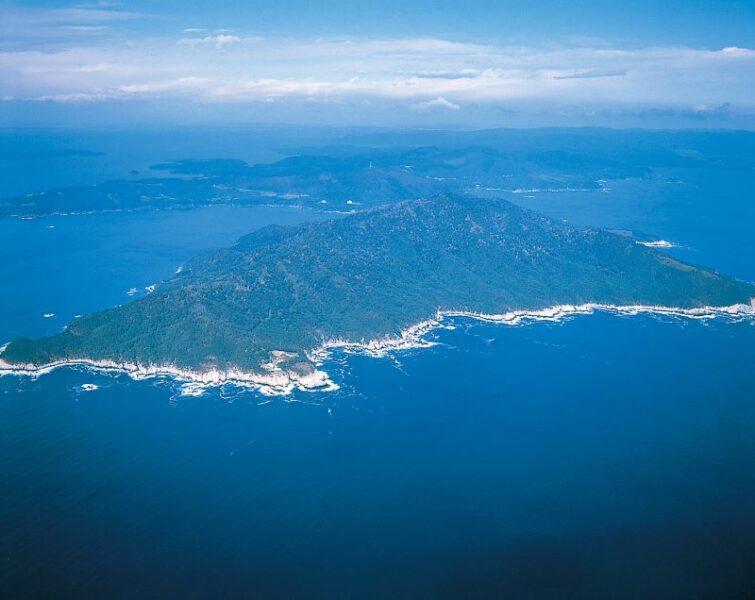
In the main text, it is said that he got lost and ended up in Ishinomaki by chance, but since it is written that he saw Mount Kinka, a
Mount Kinka cannot be seen from the high ground around Ishinomaki, hidden by the Oshika Peninsula, so if what Basho saw was true, he would have had to go to the eastern coast or tip of the peninsula
It is also said that the two utamakura are located directly north of Matsushima, and there is no way they could appear in Ishinomaki to the east
Furthermore, it is written that in Ishinomaki, "I couldn't find a place to stay and had to stay in a small, poor house," but Sora's travel diary states that he was introduced to a place to stay by someone he met along the way, so it seems he had no trouble finding a place to stay
Therefore, the most likely theory is that is a depiction of the "tough journey" that took place before reaching Hiraizumi
In Sora's travel diary, "Sode no Watashi," a place associated with Minamoto no Yoshitsune that the main text states he "only saw with a passing eye," and stays at "Shiheihe," an inn that stood where the Ishinomaki Grand Hotel is today.
The next day, we headed north along the Kitakami River and stayed at a lodging in Tome, which is written as "Toima."
[Hiraizumi] The prosperity and fall of three generations of the Oshu Fujiwara clan, and the sorrow of Minamoto no Yoshitsune, brought to tears

On May 12th (June 28th), Basho and Sora arrived in Ichinoseki City, Iwate Prefecture in the rain and stayed overnight, and the next day, on the 13th (June 29th), they headed to Hiraizumi
During the heyday of the Oshu Fujiwara clan , Hiraizumi was the second largest city after Heian-kyo, and a vibrant Buddhist culture flourished there.
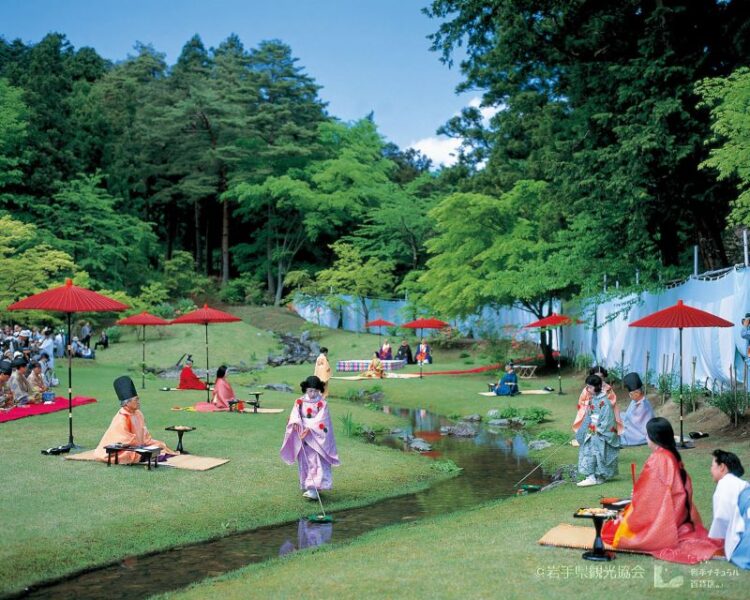
However, in 1189, Minamoto no Yoritomo attacked Hiraizumi on the pretext of hiding Minamoto no Yoshitsune, and the Oshu Fujiwara clan was destroyed, causing Hiraizumi to fall into decline
"The country may be destroyed, but the mountains and rivers remain; the castle is in spring and the grass is green." is a quotation from the opening line of a poem by Tang Dynasty poet Du Fu, "Looking for Spring," which reads, "The country may be destroyed, but the mountains and rivers remain; the castle is in spring and the grass is green."
This even if a country is destroyed by war or other calamities, the mountains and rivers remain as they were in the past , expressing the futility of humans repeatedly waging war, and Basho superimposed this on his feelings about the rise and fall of Hiraizumi.
The chapter on Hiraizumi has been highly praised for its literary perfection, and the two haiku by the famous Basho and one by Sora are also highly praised for their beautiful expression of the view of impermanence
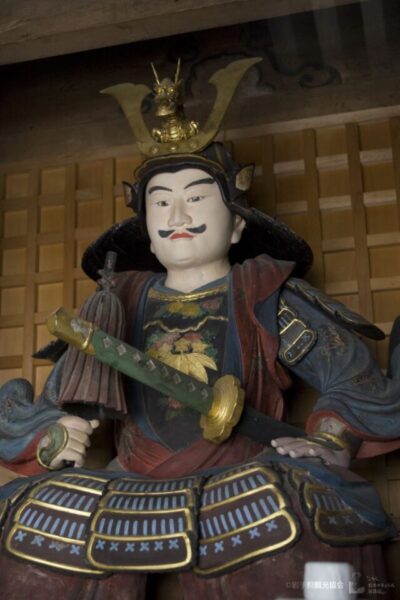
In particular, the scene where Yoshitsune sheds tears of grief at Takadachi, where he committed suicide, is considered the climax of Oku no Hosomichi, and it is said that the depiction of the famous places related to Yoshitsune up to this point was a setup for that
In addition to Takadate Basho also visited Mount Kinkei, Chusonji Temple (Golden Hall), the ruins of Fujiwara Hidehira's mansion, Izumi Castle, Koromo-no-Seki, and Koromogawa
Summer grass, traces of the dreams of warriors (Basho)
This verse, which means "The fame and glory of the Oshu Fujiwara clan and Yoshitsune and his followers have now vanished like a fleeting dream, and all that remains in their final resting place is summer grass," is one of the most well-known verses from Oku no Hosomichi

The work is filled with the transience of life that Basho felt when he visited Hiraizumi, which remains the "vestige of a dream" that spanned approximately 100 years of three generations of the Fujiwara clan, and witnessed the final resting place of Yoshitsune and his followers
Kanefusa appears among the unobserved flowers, his hair turning white (Sora)
The meaning behind this is that "looking at the white swaying unobservant flowers, they remind me of the white hair of Kanefusa, the retainer who met his end alongside Yoshitsune," and the pale unobservant flowers are a reflection of Yoshitsune's feelings for his master and servant, who met their end in this place
However, Jurogon no Kamikanefusa, a retainer who is said to have met a heroic end while protecting Yoshitsune, is considered to be a fictitious character who did not exist in reality, and there seems to be no definitive proof that this poem itself was written by Sora
Takadate Yoshitsune Hall <Information>
- Facility name: Takadate Yoshitsune Hall
- Address: 14 Hiraizumi Yanagigosho, Hiraizumi-cho, Nishiiwai-gun, Iwate Prefecture (within the outlying grounds of Motsuji Temple)
- Phone number: 0191-46-3300
- Visiting hours: 8:30-16:30 (November 5th-November 20th until 16:00)
- Closed: November 21st to March 14th (winter period)
- URL: Takadate Yoshitsunedo official website
Google Map
[Chusonji Golden Hall] The light hall remains unchanged from the past
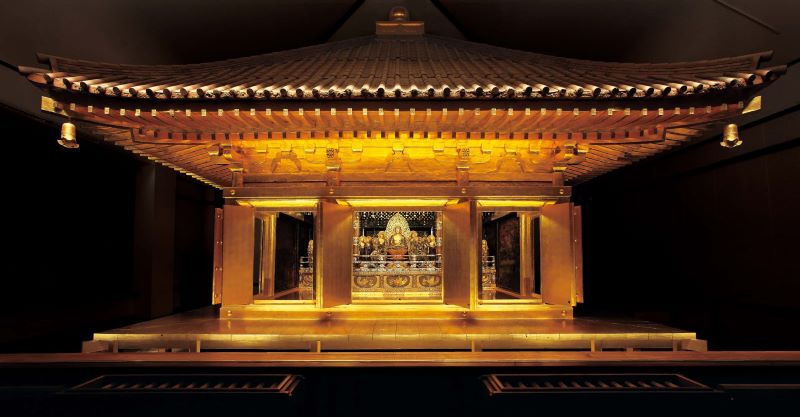
Basho writes in the text that he visited the Sutra Hall (Daichoujuin) and the Light Hall (Golden Hall) at Chusonji Temple, but Sora's travel diary states that he was actually only able to see the Golden Hall
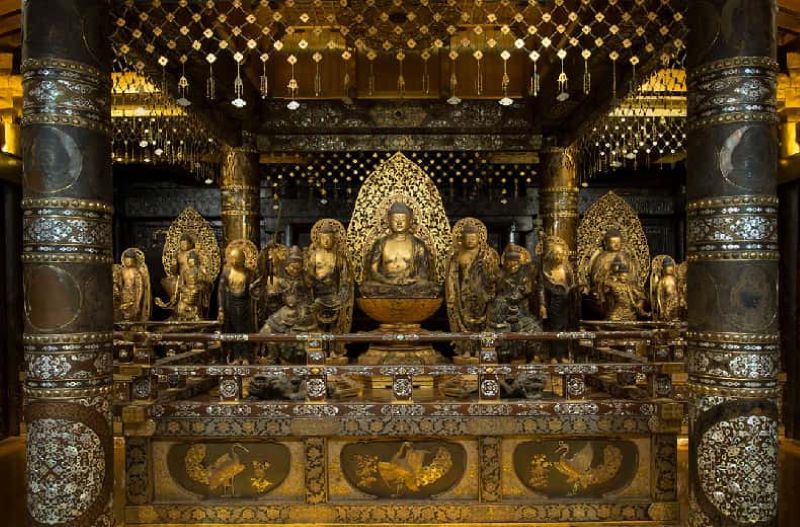
The peacock-adorned dais in the shining, gold-leafed Konjikido Hall houses the remains of the three Fujiwara clans (Kiyohira, Motohira, and Hidehira) and the head of Yasuhira, the last head of the family. It was designated a National Treasure in 1951
It is currently housed inside a sturdy reinforced concrete building, and is further enclosed in a glass case to block it from the outside air
The rain of May has fallen, leaving the light hall (Basho)
It means that "Even the May rain that washes away everything seems to leave only Mitsudo untouched, out of respect for its nobility."
During the Kamakura period, a covering hall was built around the outside of the Golden Hall to protect it, and Basho wrote a haiku expressing his feelings, saying that this covering hall would "preserve its appearance for about a thousand years."
Chusonji Temple<Information>
- Facility name: Chusonji Temple
- Location: Hiraizumi Kinuzuki, Hiraizumi-cho, Nishiiwai-gun, Iwate Prefecture
- Phone number: 0191-46-2211
- Visiting hours: 8:30-17:00
- URL: Chusonji Temple official website
Google Map
【A detour into the depths ④: Who was Kawai Sora?
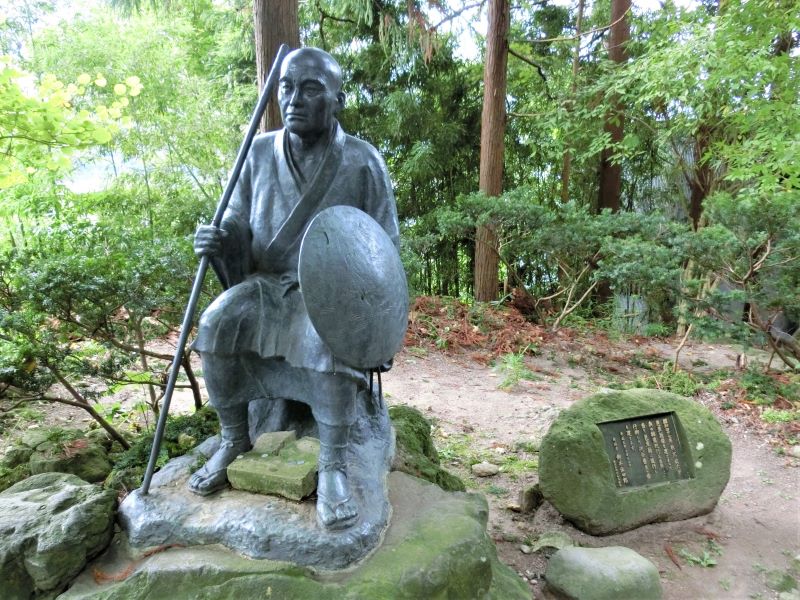
Kawai Sora 's real name Iwanami Shoemon (commonly known as Kawai Sogoro) , and he was born in 1649 in what is now Suwa City, Nagano Prefecture. However, he lost his parents and adoptive parents at a young age and was raised in a temple in Ise Nagashima.
Having gone to Edo to study Yoshikawa Shinto, he was knowledgeable as a Shintoist and had a gentle personality.After becoming Basho's disciple, he devoted himself to Basho and one of the Ten Philosophers of the Basho School .
During Basho's travels, she was apparently a capable secretary who took care of everything from calculating travel expenses to arranging accommodation
There are about 130 haiku poems known to have been written by him, including those published in Oku no Hosomichi. In his later years, he died of illness on Iki Island while serving as an inspector for the shogunate
summary
In Oku no Hosomichi, the chapter on Hiraizumi is highly praised as it expresses Basho's mental landscape of "things that change and things that remain the same."
It is said that Basho's greatest goal was to see Hiraizumi with his own eyes, a place his beloved monk Saigyo loved so much that he visited twice, and it may be said that he portrayed this mental landscape as the "end point of his journey."
After visiting Hiraizumi, Basho headed for Kisakata in Akita Prefecture, a scenic spot that rivals Matsushima, one of Japan's three most scenic spots, and then headed to Yamagata Prefecture, again via Miyagi Prefecture









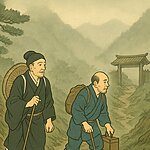


![[Serialization: Following the narrow road in the back part 7] The journey is finally coming to an end, from Dewa to Uzen, and then to Hokuriku Oku no Hosomichi 7](https://jp.neft.asia/wp-content/uploads/2023/10/ef46a9f4e23d51f52518cd66fade3cd6-1-150x150.jpg)
![[Serialization: Following the narrow path of the depths ③] After leaving Sendai, Basho and Sora arrive at Matsushima by boat from Shiogama. Oku no Hosomichi 3](https://jp.neft.asia/wp-content/uploads/2023/09/8d13d45bbc671b05b0b298bc51e72716-150x150.jpg)
![[Serialization: Following the narrow path in the back of the mountain ⑤] Struggling with the narrow path through the mountain pass and the difficult checkpoints, we headed to Dewa Province Oku no Hosomichi 5](https://jp.neft.asia/wp-content/uploads/2023/09/28a347e9b86312617fa5dcb3d266a91b-1-150x150.jpg)
![[Series: Following the narrow path to the back of the mountain ⑥] Go down the Mogami River and visit the Dewa Sanzan, one of Japan's three major Shugendo practices Oku no Hosomichi 6](https://jp.neft.asia/wp-content/uploads/2023/09/786c5389e81e05d443e2f0e37aae4289-1-150x150.jpg)
![[Serialization: Following the narrow path in the back part 2] After arriving in Miyagi Prefecture, Basho and Sora aim for Sendai, the capital of forests. Oku no Hosomichi 2](https://jp.neft.asia/wp-content/uploads/2023/09/f05201ee29d975b84ec437a8b76f2b98-150x150.jpg)
![Matsuo Basho was impressed by the legendary landscape of Kujukushima, the elephant, which is not seen now [Nikaho City, Akita Prefecture] Image of Kujukushima (Zogata)](https://jp.neft.asia/wp-content/uploads/2024/11/e07987a7f27f41ed4fd79661bf32afbc-150x150.jpg)
![[Chokaisan and Tobishima Geopark: Nikaho Edition (1)] Kujukushima, which is known alongside Matsushima, was landed in a major earthquake. 1999 Island Winter 1_Nikaho City Tourism Division](https://jp.neft.asia/wp-content/uploads/2024/10/9832b69b3165ff52241c17ad3f8bf591-150x150.jpg)
![Mokoshiji Temple, the world heritage site with Japan's oldest garden, the Jodo Garden [Iwate Prefecture] Motsuji Temple (entrance)](https://jp.neft.asia/wp-content/uploads/2016/10/IMG_3844-150x150.jpg)
